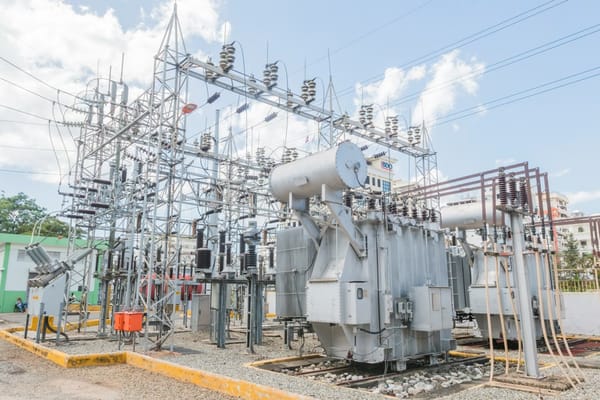Air Source Heat Pumps – How much Electric Capacity is required to replace all fossil fuel heat?
Air Source Heat Pump represent a potential turning point in how we approach heating, moving away from traditional fossil fuels.

In a previous blog we proposed a what-if scenario and gave an estimate on how much electric capacity would need to be added to the Ontario Grid if all cars were electric and were to be charged at night.
In this blog we will attempt to do the same, but for another emerging household energy use solution garnering significant attention - the Air Source Heat Pump (ASHP). These systems represent a potential turning point in how we approach heating, moving away from traditional fossil fuels.
Join us as we explore this intriguing scenario, blending technical insights with broader implications for both the general public and energy industry professionals.
Understanding Air Source Heat Pumps (ASHPs)
Air Source Heat Pumps (ASHPs) represent a forward-thinking solution in the realm of sustainable heating and cooling. At their core, ASHPs are devices that transfer heat from outside to inside a building, or vice versa, using the air as a medium. This capability to provide both heating and cooling makes ASHPs a versatile choice for year-round climate control.
The Fit for Ontario
For a province like Ontario, where climate variability is a fact of life, ASHPs offer a promising avenue. They provide a sustainable alternative to traditional fossil fuel-based heating systems, aligning with the growing environmental consciousness among consumers and industries alike. However, integrating ASHPs into the existing energy infrastructure of Ontario presents both challenges and opportunities, which we will explore in the following sections.

The Current State of Electric Capacity in Ontario
The province's energy landscape is a complex mosaic of various power sources, including Nuclear, Hydroelectric, Biofuel, Gas, Solar, and Wind. Understanding this mix is crucial in assessing the feasibility and implications of transitioning to ASHPs.
Estimating Additional Electric Capacity for ASHP Transition
The crucial element lies in estimating the additional electric capacity needed to support the widespread adoption of ASHPs. This estimation is more than a mere numbers game; it involves a thorough understanding of current energy usage patterns, the efficiency of ASHPs, and the potential scale of their deployment.

Residential Units & ASHPs
To understand the electric capacity needed for heating residential units, one would have to compare the amount of natural gas used for residential heating to the similar amount used for generating heat. This method has been performed and presented in the document “An Analysis of the Impacts of All-Electric Heat Pumps and Peak Mitigation Technologies on Peak Power Demand in Ontario” prepared for the Ontario Clean Air Alliance by McDiarmid Climate Consulting. They state: “If ASHP/ Heat Pump Water Heaters (HPWHs) are used in all homes, the power draw would increase by nearly 10 gigawatts (GW).”
This estimate appears to cover only single detached homes in Ontario, which make up 54.3% of the 5,169,175 identified residences in Ontario. The remaining residences would likely be smaller and require less heat. It could be estimated that the remaining 45.7% of homes require less than 50% of the heat. Given also that the 2020 data shows that 16.7% of these residences already have electric heat, we will estimate 2 to 4 GW of additional capacity would be added for the conversion of these remaining homes to an ASHP system.
Beyond Residential Needs
While residential heating is a significant part of the equation, it's crucial to also factor in the Industrial, Commercial and Institutional (ICI) sector. These consumers have unique energy profiles and requirements, adding another layer to our capacity calculations.
Energy usage data for each province is available for ICI entities (1). For Ontario, the ICI sector uses approximately 220 TWh of fossil-fuel-based energy annually (2). If we assume that approximately 30% of that is used for space heating, then about 60 TWh of heat energy would be needed from ASHP, which converts to approximately an additional electrical capacity of 21 GW (3).
Implications of ASHPs on the Grid
As we estimated above, a substantial amount of additional capacity is needed to integrate ASHPs. Some additional capacity currently exists with the IESO - while the total installed capacity is 38 GW, the forecasted available capacity during the 2024 summer peak is only 27 GW, which is not a whole lot of cushion from the peak demand of 25 GW.

While it is understood that the transition to ASHPs will happen gradually, one must also remember that ASHPs will be competing with other electrification initiatives, such as EVs, for capacity over the coming years.
However, unlike EVs, the additional capacity needed for ASHPs would primarily be in the winter months. Ontario is currently a summer-peaking province, and as stated above the forecasted generation availability is during the summer peak. One would have to study the capacity available during the winter months to better formulate a strategy for the capacity shortfall.
In conclusion, we believe the grid will see a higher integration of ASHPs in the coming years, and will therefore need greater infrastructure investments, incentivization of load management through better demand response programs, renewable and distributed energy resource integration, as well as other innovative technology, business, and regulatory models to facilitate this integration and its resulting capacity requirements.
Footnotes:
(2) For Ontario, the ICI sector uses approximately 800 Petajoules of energy from Fossil Fuels for all process and heating purposes annually. The equivalent electrical energy would be approximately 220 TWh annually.
(3) We assumed that a total of 60 TWh of the ICI energy requirements are for space heating spread out over 5 months, converting to an average requirement of 21 GW of heat energy required every hour (assuming a 30-day month) for those winter months. Considering the worst-case scenario, where at lower temperatures ASHPs have lower efficiency and require a 1-to-1 electricity-to-heating ratio, we get to the assumption of 21 GW of electrical capacity required for the ICI sector.






